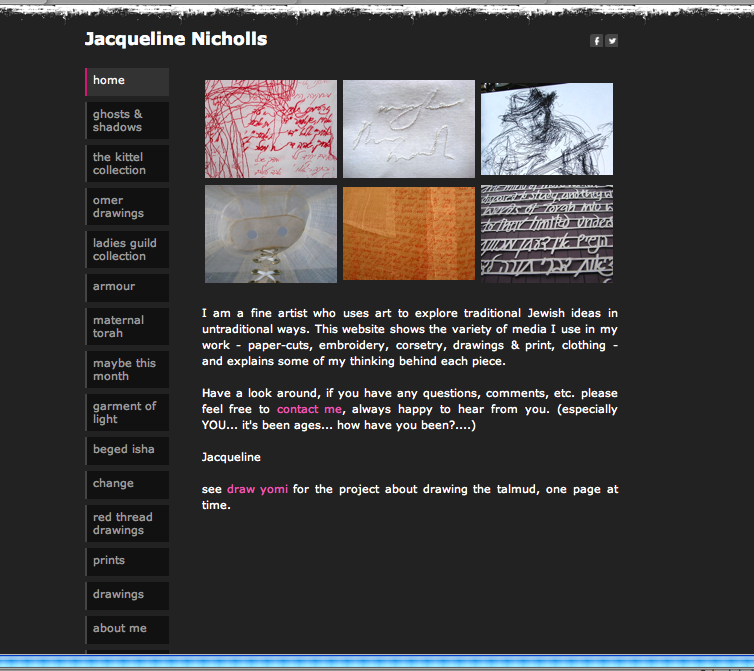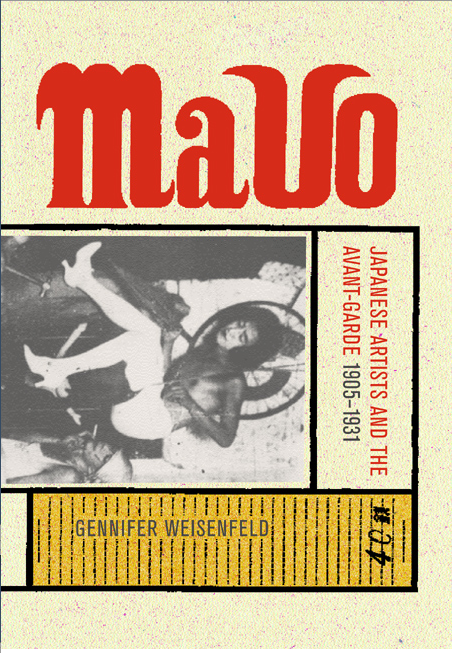 In 1974, an unsuspecting
farmer in Xian, People’s Republic of China, discovered that the retinue of
8,000 terra cotta warriors and horses buried with China’s first emperor, Qin
Shi Huang, in about 210 B.C.E., never made it to the netherworld.
In 1974, an unsuspecting
farmer in Xian, People’s Republic of China, discovered that the retinue of
8,000 terra cotta warriors and horses buried with China’s first emperor, Qin
Shi Huang, in about 210 B.C.E., never made it to the netherworld. While grave robbers and archeologists alike have delighted in unearthing material culture in burial sites throughout the world, the Chinese invented a better way to deliver the goods and to maintain a spiritual harmony with one’s predecedents. Ever the technological innovators, by around the eighth century C.E. (mid-Tang, 906 – 1125 C.E.)[i] it became a common practice to render facsimiles of one’s earthly possessions – real and coveted – into one of the world’s greatest inventions – paper. What’s more, the offerings can be delivered during rituals by sending them up in pyre of smoky flames.
While grave robbers and archeologists alike have delighted in unearthing material culture in burial sites throughout the world, the Chinese invented a better way to deliver the goods and to maintain a spiritual harmony with one’s predecedents. Ever the technological innovators, by around the eighth century C.E. (mid-Tang, 906 – 1125 C.E.)[i] it became a common practice to render facsimiles of one’s earthly possessions – real and coveted – into one of the world’s greatest inventions – paper. What’s more, the offerings can be delivered during rituals by sending them up in pyre of smoky flames.
In the complex Taoist belief system each person is born into this world by borrowing money from the celestial treasury and stays alive only so long as the term of repayment has not ended. Upon death, repayment is due in full; souls go into purgatory to be redeemed through ransom to the Kings of Hell so that they may move on to join the great Tao. Thus, it became the responsibility of the living to settle the account of their loved ones to insure them a safe passage through the various realms of the beyond.[ii]
To this day, it is most desirable that a person provides an heir in life, preferably male, to serve as the executor of the material and spiritual estate. Most desirable is to provide an appropriate funeral for one’s loved one so that the transition will lead to a “life” after death as an ancestor or, better yet, a god.
Failing to bear children, or to die without the benefit of a spouse, (or through violent death or other unhappy circumstances) sets the scene for turmoil for both the deceased and those remaining in life. Spirit marriages and adopt-an-heir practices – may be undertaken on behalf of the deceased to try to prevent the havoc-wreaking fate of becoming a hungry ghost. “Lack of sustenance or material goods is a common cause of a ghost’s discontent,”[iii] a condition that can be lightened or even reversed by sending off money and material goods rendered in paper via smoke at a local temple.
Lisa See’s protagonist in her novel Peony in Love, set in the 17th Century China, gives unique voice to such fate. A girl of marital age becomes terminally lovesick from a magnificent obsession with the main character of the great Chinese opera Peony Pavilion, and dies just before her nuptials:
On the third day after my death, my body was placed in my coffin, along with ashes, copper coins and lime. Then the unsealed coffin was set in a corner of an outer courtyard to wait until the diviner found the right day and place for me to be buried. My aunts put cakes in my hands, and my uncles laid sticks on either side of my body. They gathered together clothes, binding cloth for my feet, money and food – all made from paper – and burned them so that they would accompany me to the afterworld. But I was a girl, and soon enough I learned they hadn’t sent enough.[iv]
 Baba, as the eldest son, was in charge of all the [funeral] rites. His main duty and responsibility now were to see me properly interred and my ancestor tablet dotted. My family and our servants prepared more paper offerings – all those things they though I might need in for my new life. They made clothes, food, rooms and books for my entertainment. They did not provide a palanquin, because even in death Mama did not want me to go abroad. On the eve of my funeral, these offerings were burned in the street. From the viewing Terrace, I saw Shao use a stick to beat at the fire and the leaves of paper as they twisted in the flames to keep away the spirits who wanted to take my belongings. My father should have had one of my uncles do this to show that he meant business and my mother should have thrown rice around the edges of the fire to attract the attention of the hungry ghosts who craved the food, because Shao did not scare away the spirits and nearly everything was stolen before I had a chance to receive it.[v]
Baba, as the eldest son, was in charge of all the [funeral] rites. His main duty and responsibility now were to see me properly interred and my ancestor tablet dotted. My family and our servants prepared more paper offerings – all those things they though I might need in for my new life. They made clothes, food, rooms and books for my entertainment. They did not provide a palanquin, because even in death Mama did not want me to go abroad. On the eve of my funeral, these offerings were burned in the street. From the viewing Terrace, I saw Shao use a stick to beat at the fire and the leaves of paper as they twisted in the flames to keep away the spirits who wanted to take my belongings. My father should have had one of my uncles do this to show that he meant business and my mother should have thrown rice around the edges of the fire to attract the attention of the hungry ghosts who craved the food, because Shao did not scare away the spirits and nearly everything was stolen before I had a chance to receive it.[v]
The young girl learns, under the tutelage of her ghostly grandmother, to navigate the after-life as a hungry ghost, manipulating events on earth so that her account may be settled and that she may move on to achieving full ancestor rank:
On the first day of the tenth month, the official start of winter, they should have burned padded jackets, woolen caps, and fur-lined boots all made of paper to keep me warm. Throughout the year, my family should have been making offerings to me of cooked rice, wine, plates of meat and spirit money on the first and fifteenth of every month.[vi]
As in life, “gold” and “silver” bullion and cash are welcomed legal tender in this virtual economy. Even the most humble deceased seems to need piles of it to bribe gatekeepers and buy other everyday necessities, just as one would need in life.
 In the case of the precious metals, rice or bamboo paper with a field of metallic (usually gold, silver or copper) foil[vii] pressed in the middle are sold in wads of 100 stacked about four inches high. They may be purchased for about $1 from general merchandise stores in Chinese communities next to the joss sticks (incense) and altar candles. These “money papers” are folded into three-dimensional shapes by mourners according to different family traditions. The most frequent design is of a sycee, an ingot of precious metal that was used as currency up to the 19th Century. Its “boat” shape symbolizes richness transported from one point or person to another. Prefabricated two and three-dimensional paper sycee are also widely for sale.
In the case of the precious metals, rice or bamboo paper with a field of metallic (usually gold, silver or copper) foil[vii] pressed in the middle are sold in wads of 100 stacked about four inches high. They may be purchased for about $1 from general merchandise stores in Chinese communities next to the joss sticks (incense) and altar candles. These “money papers” are folded into three-dimensional shapes by mourners according to different family traditions. The most frequent design is of a sycee, an ingot of precious metal that was used as currency up to the 19th Century. Its “boat” shape symbolizes richness transported from one point or person to another. Prefabricated two and three-dimensional paper sycee are also widely for sale. Paper currency drawn on the “Bank of Hell” began to appear according to one account in 1968, at the height of the Cultural Revolution. According to one popular story, zealous Christian missionaries warned all non-Christian Chinese they'd "go to Hell" upon death. In a classic case of misinterpretation, the Chinese believed Hell was the English term for the Afterlife.”[viii] Most of these “funds”, purchased in wads of “gadziillions” of “dollars” bear a likeness of the Jade Emperor, Yu Wong, who signature as “Bank President” may appear to “guarantee” the legal tender. The currency is the basis of the deceased’s karmic “bank account” that generates interest from his mortal generosity and other good deeds. How can a person making a paper offering be sure that it is received? Some burn a paper “treasury officer” to can take care of the offerings.
Paper currency drawn on the “Bank of Hell” began to appear according to one account in 1968, at the height of the Cultural Revolution. According to one popular story, zealous Christian missionaries warned all non-Christian Chinese they'd "go to Hell" upon death. In a classic case of misinterpretation, the Chinese believed Hell was the English term for the Afterlife.”[viii] Most of these “funds”, purchased in wads of “gadziillions” of “dollars” bear a likeness of the Jade Emperor, Yu Wong, who signature as “Bank President” may appear to “guarantee” the legal tender. The currency is the basis of the deceased’s karmic “bank account” that generates interest from his mortal generosity and other good deeds. How can a person making a paper offering be sure that it is received? Some burn a paper “treasury officer” to can take care of the offerings. The living may also send “up” “care packages” of material possessions, from yachts and automobiles, laptops and flat screen TVs, cell phones (with chargers!) to spiffy new outfits complete with shoes and sox -- all rendered in paper. Other selections include off-brand cigarettes, first aid supplies, condoms and even “Viagra”. Facsimile “Visa” cards are popular, begging some obvious questions: Are there ATMs in the afterlife? Do they impose late fees?
The living may also send “up” “care packages” of material possessions, from yachts and automobiles, laptops and flat screen TVs, cell phones (with chargers!) to spiffy new outfits complete with shoes and sox -- all rendered in paper. Other selections include off-brand cigarettes, first aid supplies, condoms and even “Viagra”. Facsimile “Visa” cards are popular, begging some obvious questions: Are there ATMs in the afterlife? Do they impose late fees?
These are usually sold in specialty shops that may also be workshops in which elaborate three-dimensional sculptures, such as mansions complete with furniture, are fabricated by skilled craftspeople. Much of the work has become mass-produced, but there are still craftspeople who take pride in not only knowing how to make objects but who also know the proper rites for offering.
In Hong Kong, Taipei, and Macao some of these may be elaborately constructed to near life-size to be offered at the funeral. When ignited they make huge bonfires and are in sufficient quantity to have challenged local anti-pollution regulations. However, most paper effigies are simply rendered from flat, printed single ply cardboard.
Dzi dzat are also offered on annual festival days, such as lunar New Year, Ching Ming (15th day after the Spring Equinox) and Ghost Month (seventh lunar month), the deceased’s birthday, and anniversary of death. Some people may make such an offering after having a dream about the deceased.
 Would a poor, immigrant deceased great-great grandparent who always only paid in cash know how to use a credit card? I asked Carol Kwan, owner of Commonwealth Trading Company, a joss paper specialty store in Los Angeles’ Chinatown.
Would a poor, immigrant deceased great-great grandparent who always only paid in cash know how to use a credit card? I asked Carol Kwan, owner of Commonwealth Trading Company, a joss paper specialty store in Los Angeles’ Chinatown.
“Keeping up with modern lifestyle and technology is important,” she explained. Her stock includes cell phones and “Blackberry” devices (with paper chargers, paper batteries, belt hooks and ear pieces); a few older style “wired” phones were found tucked away on a higher shelf.
Respect for one’s ancestors is a life-long duty and translates easily as a cross-cultural exercise. Providing lavish, material offerings is also thought to have an earthly pay-off, including luck, wealth, and progeny, made possible by the intercession of those from the beyond. It gives one pause to consider what Peony’s grandmother admonished:
“Now pay attention, Grandmother ordered. You need to think about why you’re stuck here.”
Endnotes
[i] Johnston Liang, Ellen and Liu, Helen Hui-Ling. Up in Flame: The Ephemeral art of Pasted-Paper Sculpture in Taiwan (Stanford, CA, Stanford University Press, 2004, p. 11.)
[ii] Scott, Janet Lee. For Gods, Ghosts and Ancestors: The Chinese Tradition of Paper Offerings (Hong Kong, Hong Kong University Press, 2007, page 26.)
[iii] Johnston LIang and Liu (p. 10)
[iv] See, Lisa. Peony in Love (New York, NY, Random House, 2007, p. 101)
[v] ibid, p. 109
[vi] ibid, p. 123
[vii] The extensive analysis (origins, uses, religious and philosophical significance, and the various crafts involved in papermaking and foilmaking, like woodblock printing, paper cutting, ink manufacture and printing), while fascinating, is beyond the scope of this article. Jocelyn Cohen has produced The Spirit and Craft of Chinese Ritual Papers, a 225-page book, including 400 additional paper samples, that explores the philosophy, history, folklore and fabrication of the six broad groupings of Chinese spirit papers. It can be found in the British Museum (London), Lilly Library (Indiana University) and Marriott Library (University of Utah) and sampled, if only virtually, online at http://www.jocelync.com/ritpap.html.
text
and photography copyright 2010 by lauren w. deutsch. all rights reserved.
originally published in parabola, v. 35.2, spring 2010











